In today’s ever-changing business landscape, what may have gotten your talent to join your organization may not keep them from leaving. Organizations today must be constantly evaluating the ways in which they are retaining their talent. In fact, over 57% of unhappy employees leave their jobs because of their bosses. It all comes back to leadership, particularly management, and how leadership is engaging employees. We asked some of our experts how coaching can equip individuals in management positions to become better leaders of people. We also asked them what skills should leaders develop to more effectively engage employees. Here is what they had to say:
Answers From the Experts:
 Lyn Turknett,
Lyn Turknett,
Co-founder and Co-chair, TLG
One of the number one reasons employees leave their employers is bad management. How can coaching equip managers to become better people-leaders?
People don’t leave companies – people leave their boss. That’s forever true, and anyone who has consulted in multiple organizations sees that borne out every day. One of the most fascinating things about doing organization engagement surveys is seeing tiny “pockets of engagement” – and loyalty – in an overall toxic culture. People leaders matter.
We were consulting in large organizations when the first waves of downsizing occurred in the 1990s. There had been a somewhat unspoken contract between employer and employee – “if I’m loyal to you, you will be loyal to me” – and suddenly that was broken. Richard McKnight, writing in Training and Development in 1991, introduced a way of thinking about ourselves that can help us build resilience. He said that we can see ourselves in one of three ways, and the mindset we create makes all the difference.
Coaching works because it works differently. Here are just three important ways:
- The major difference is that it is over time, and that fact in itself makes any learning much more likely to stick. There is time to learn a concept, figure out with a coach exactly how it applies to you, experiment with new behavior, and discuss results and next steps with the coach.
- Coaching builds self-awareness. Most of us think we are more effective at any behavior than we are – social scientists have known for a long time that we overestimate our skill. Leaders who begin coaching often think they are great listeners, good at recognition, and clear, direct communicators. The assessment that is a part of coaching – particularly 360 degree feedback and personality assessment – can illuminate blind spots.
- Executive coaching with a highly experienced coach can often impact more than behavior- it can impact our perspective on our experience and our way of being. It can be truly transformative. We know that adults continue to grow and change in the right environment. Assumptions can keep us stuck, though, and good coaches can help us surface assumptions and take an “outside perspective” on ourselves. Coaching can help break through our Immunity to Change.
What skills can leaders develop to engage their employees more effectively and intentionally?
Two people have taught me things this week that seem super relevant here.
- One is Taylor Swift. I saw an article about her marketing savvy and her incredible emotional intelligence – something essential for leaders who want to engage with their employees. She not only had a hugely successful tour, she now has a film with concert highlights. The article was about the seven words she used to introduce the film – “You are the main characters in this film.” Only leaders who can make others feel that they are the main characters – that the business is successful because of them – can truly engage the workforce. More importantly, it’s true. People leaders get things done ONLY through others. Believe that, and let it show.
- My second teacher is someone I’ve admired for a long time – David Brooks. He has a new book, How to Know a Person: the Art of Seeing Others Deeply and Being Deeply Seen. I haven’t read the book yet (I plan to), but I read a summary in last week’s NY Times, and there’s a lot just in the summary that helped me. I am pretty sure it can help leaders engage. Here are just a few tips for better listening.
-
-
-
- Be a loud listener. When someone is talking,” listen so actively that you feel like you are burning calories.”
- “Storify” when possible. Brooks means by this getting people to talk more deeply about how they came to their opinion, not just “What do you think?” but “How did you come to believe that?”
- Do “looping,” or what we used to call paraphrasing. Repeat back what you heard and ask if you are right. It’s an old technique but still works well.
- Don’t be a topper. This one is incredibly important. When someone tells us a problem they’re having, our first instinct is often to come up with a similar experience we’ve had. The problem, of course, is that “topping” turns the attention back to you, and you are no longer listening and connecting.
-
-
To read Lyn’s full article on the three levels of change, click here.
 Tim Huff,
Tim Huff,
President, TLG
One of the number one reasons employees leave their employers is bad management. How can coaching equip managers to become better people-leaders?
As a former client of an executive coach who found transformational benefit from a coaching experience, I can confidently say that executive coaching is the best way to level up one’s leadership skills and impact, and a central foundation of long-term effective leadership is human-centric leadership. There are a few reasons why coaching is so effective at helping uplift these skills.
-
- Coaching is 100% confidential. When a coach and a client have a conversation, the contents of that discussion are only between the coach and the client with very few exceptions. This allows the ability for the client to feel a high degree of comfort in being open and honest with the coach, and more importantly, with themselves. Weaknesses and improvement areas in people-leadership skills can be openly discussed in ways that the client can objectively see what’s working and what’s not working for them.
- Coaching is judgement-free. In addition to a coaching session being confidential, clients can feel more comfortable knowing that the coach’s role is to be a non-judgmental advocate for growth. That is, the coach will meet the client when he or she is and walk with them on their journey to a place of improvement on the leadership abilities that’s most valuable to the client. Especially in the areas of people-leadership, clients can sometimes not be aware of their negative impacts on others. A judgement-free zone allows for open exploration in this area.
- Coaching is 100% client-focused. Although many coaching programs have a structure to them, which is true with TLG’s coaching engagements, the fact that the engagement is one-on-one allows the coach and the client to co-create the discussions in a way that’s most effective for the client. Sometimes the discussions can be laser-focused on one specific people-leadership topic or experience the client recently had, while other times the discussion can be more open-ended, reflecting on the benefits of a human-centered leadership style.
When leaders are open and vulnerable enough to honestly explore potential ways to improve their leadership impact, especially in ways that affect their employees and the experience they’re providing for their teams, overall effectiveness, engagement, and productivity are almost always uplifted!
What skills can leaders develop to engage their employees more effectively and intentionally?
The common saying, “People don’t care how much you know until they know how much you care” rings very true here. To engage employees in a constructive way that helps build a team culture of trust, respect, and accountability, leaders must be authentic and natural. That’s a necessary starting point. If a leader attempts to engage with employees inauthentically, employees will quickly pick up on that, and trust in the relationship will suffer. Here are a few thoughts, especially for leaders who struggle in this area.
-
- Be open and honest with employees regarding weak areas. A leader letting their employees know that their natural inclination is to focus more on results and progress versus the people on the team, and they recognize that as an improvement area, can go a long way to establishing trust. This requires some vulnerability from the leader, some proper word choices, and some trust from the leader that the team will receive the message in the way it’s intended.
- Make an attempt to engage. So often, when employees see the leader making a good faith attempt to engage with the team members authentically, their level of appreciation and trust with the leader will naturally increase. It will take time, active listening skills, and sometimes patience for the leader to slow down, look people in the eye, and have a conversation that is centered on the other person. These attempts, when done over time and in such a way that is focused on trust-building, can be very effective in overall team development.
- Have some degree of emotional intelligence. With the authentic attempts from leaders in engaging with members on their team, leaders can be significantly more effective with a degree of emotional intelligence, and specifically, empathy. The key to being empathetic involves thinking of the other person and putting their experience and needs above your own. This requires the leader to set aside their desire to shape a conversation to fit what they want or need and to allow the other person to bring what they want or need into the discussion.
There are many other people-centric skills that leaders can employ to effectively engage with their employees, but often times, it comes down to just being authentic and genuinely making an attempt with some degree of empathy.
 Brian Frost, Ph.D.,
Brian Frost, Ph.D.,
Senior Consultant, TLG
One of the number one reasons employees leave their employers is bad management. How can coaching equip managers to become better people-leaders?
Being an effective people-leader essentially boils down to the concept of perceived organizational support. Do your people feel that you care for them and want the best for them? Every person on your team must feel this way, and each person varies in their needs, desires, and goals. Very few leaders can naturally make all of their direct reports feel this way. Most leaders need to make a concerted effort to achieve this and do not make the time to do it. Coaching provides a structured, supportive process to make that effort intentional. Coaching can ensure you ask effective questions with your people, engage with them appropriately throughout the day, and give them the right opportunities.
Much like many of us with demanding personal lives struggling to consistently find the time to exercise every day, we have to be intentional about it and have support in that effort.
What skills can leaders develop to engage their employees more effectively and intentionally?
Asking the right questions at the right time. On at least a weekly basis near the end of the week, check in with your direct reports individually (not in a team meeting) and ask: What is going well? What is not going well? What, if any, support would be most helpful from me?
Explore the rest of our team!

